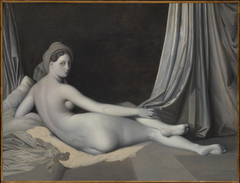Neoclassicism
"The one way for us to become great, perhaps inimitable, is by imitating the ancients."
Neoclassicism is the 18th and 19th century movement that developed in Europe as a reaction to the excesses of Baroque and Rococo styles that were dominant in the previous era. The movement sought to return to the classical beauty and magnificence of the Ancient Greece and the Roman Empire. Neoclassical art is based on simplicity and symmetry and takes its inspiration from the German art historian Johann Joachim Winckelmann who believed that art should aim at the ideal forms and beauty of Greek art. Explore the Neoclassicism movement by starting from What is Neoclassicism? and browse our curated list of artworks from neoclassicism painters such as Jacques-Louis David, Jean-Auguste-Dominique Ingres and others.



















